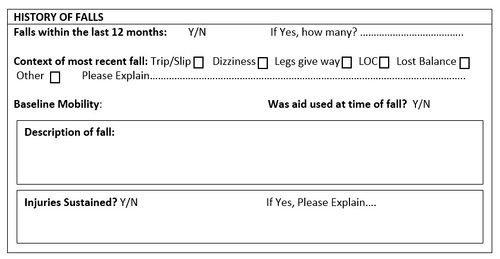Getting The Dementia Fall Risk To Work
Some Known Details About Dementia Fall Risk
Table of ContentsHow Dementia Fall Risk can Save You Time, Stress, and Money.The Ultimate Guide To Dementia Fall RiskA Biased View of Dementia Fall RiskLittle Known Facts About Dementia Fall Risk.
A loss threat assessment checks to see how likely it is that you will fall. The evaluation normally consists of: This consists of a collection of inquiries concerning your overall health and if you've had previous falls or problems with balance, standing, and/or walking.STEADI includes screening, assessing, and intervention. Interventions are recommendations that may reduce your risk of falling. STEADI includes 3 actions: you for your threat of succumbing to your danger aspects that can be enhanced to try to avoid falls (for instance, equilibrium troubles, damaged vision) to minimize your threat of dropping by making use of effective methods (for example, providing education and sources), you may be asked numerous concerns including: Have you fallen in the previous year? Do you feel unsteady when standing or strolling? Are you stressed regarding falling?, your company will test your toughness, equilibrium, and gait, making use of the adhering to autumn assessment devices: This test checks your gait.
If it takes you 12 secs or even more, it may indicate you are at greater risk for an autumn. This examination checks toughness and balance.
The settings will certainly get more difficult as you go. Stand with your feet side-by-side. Relocate one foot midway forward, so the instep is touching the huge toe of your various other foot. Relocate one foot fully in front of the other, so the toes are touching the heel of your various other foot.
The Basic Principles Of Dementia Fall Risk
Many falls occur as an outcome of several contributing factors; therefore, managing the threat of dropping begins with determining the variables that add to drop threat - Dementia Fall Risk. Some of the most pertinent danger elements consist of: Background of prior fallsChronic clinical conditionsAcute illnessImpaired gait and balance, reduced extremity weaknessCognitive impairmentChanges in visionCertain high-risk medications and polypharmacyEnvironmental variables can likewise increase the threat for drops, consisting of: Inadequate lightingUneven or harmed flooringWet or slippery floorsMissing or harmed handrails and grab barsDamaged or poorly fitted tools, such as beds, wheelchairs, or walkersImproper use of assistive devicesInadequate guidance of the people staying in the NF, including those that display hostile behaviorsA successful loss danger management program calls for a complete medical assessment, with input from all members of the interdisciplinary group
.png)
The care strategy ought to additionally include treatments that are system-based, such as those that promote a risk-free environment (suitable lights, handrails, order bars, etc). The performance of the interventions must be evaluated regularly, and the treatment plan modified as essential to reflect modifications in the loss risk evaluation. Applying hop over to these guys a fall threat management system using evidence-based ideal practice can lower the prevalence of drops in the NF, while restricting the capacity for fall-related injuries.
How Dementia Fall Risk can Save You Time, Stress, and Money.
The AGS/BGS standard advises evaluating all grownups matured 65 years and older for autumn danger every year. This testing is composed of asking patients whether they have actually fallen 2 or more times in the past year or sought medical attention for a fall, or, if they have not fallen, whether they really feel unstable when strolling.
Individuals who have fallen when without injury moved here ought to have their balance and gait evaluated; those with gait or equilibrium problems must get extra evaluation. A history of 1 loss without injury and without stride or equilibrium issues does not require further assessment past continued annual fall threat testing. Dementia Fall Risk. An autumn risk analysis is needed as part of the Welcome to Medicare examination

Dementia Fall Risk - Truths
Documenting a falls background is one of the top quality indicators for fall prevention and administration. copyright drugs in particular are independent predictors of falls.
Postural hypotension can typically Full Article be alleviated by decreasing the dosage of blood pressurelowering medicines and/or quiting drugs that have orthostatic hypotension as a negative effects. Use of above-the-knee support pipe and resting with the head of the bed boosted might additionally minimize postural reductions in blood pressure. The suggested aspects of a fall-focused checkup are received Box 1.

A yank time above or equivalent to 12 seconds suggests high loss danger. The 30-Second Chair Stand test evaluates reduced extremity toughness and balance. Being unable to stand from a chair of knee elevation without using one's arms indicates raised autumn danger. The 4-Stage Balance examination evaluates static equilibrium by having the client stand in 4 positions, each considerably a lot more challenging.